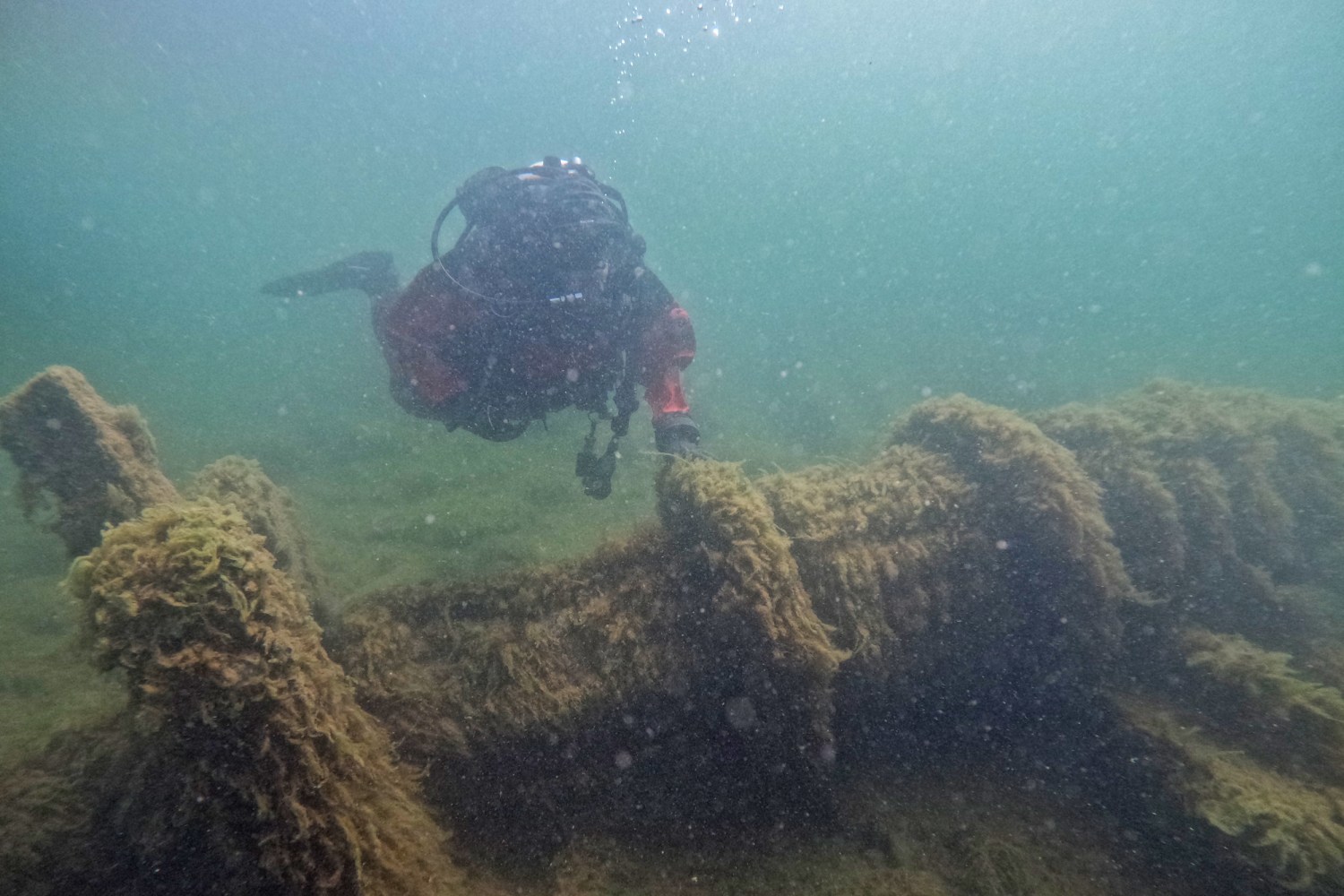What began as an ordinary day on the water for a Wisconsin boating enthusiast turned into an extraordinary discovery that has captured the attention of historians, divers, and maritime enthusiasts across the country. Beneath the calm surface of Lake Michigan, a relic of the past had been resting silently for decades—until a chance encounter brought it back into the spotlight.
The Great Lakes are famous for their abundant maritime legacy. Throughout the years, countless ships have traversed these expansive waters, transporting goods, people, and hopes for affluence. Yet, these very waters that facilitated commerce and movement also hid their own calamities, taking ships during violent tempests and erratic weather. Numerous vessels disappeared without a trace—until today.
An unexpected encounter on a routine outing
The sailor, preferring to stay unidentified at present, embarked on a peaceful fishing trip on Lake Michigan. This body of water is one of the five Great Lakes, with the unique distinction of being the only one situated entirely within the United States. Renowned for its vast size and occasionally perilous waters, Lake Michigan has served as both a vital route and a perilous challenge for numerous vessels throughout history.
On this specific occasion, the weather was perfect—blue skies, tranquil waters, and a gentle breeze moving across the surface. Employing advanced sonar technology to find groups of fish, the sailor observed something unexpected on the screen. Rather than the usual clusters of fish or natural objects, the display showed a clear, long shape resting on the lake floor.
Intrigued, the sailor chose to explore more deeply. After accurately pinpointing the spot and deploying a submerged camera, the display started to unveil something remarkable: the outline of an undamaged wooden craft, including masts and additional structural elements, indicating it was an ancient vessel.
A window into maritime history
For a long time, specialists have believed that numerous shipwrecks lie unseen beneath Lake Michigan’s waters, with many of them originating from the 19th and early 20th centuries when the Great Lakes functioned as significant trade routes. The recently found vessel seems to correspond to the features of ships from that period, presenting a rare chance for researchers to analyze a remarkably well-preserved piece of maritime history.
Preliminary evaluations indicate that the shipwreck might be that of a schooner, a type of sailing ship commonly employed in the 19th century to move timber, grain, and various products. Such vessels were crucial for the economic growth of the Midwest, traversing the extensive system of lakes and rivers to link inland localities with key marketplaces.
The frigid freshwater environment of the Great Lakes is known to preserve shipwrecks far better than saltwater conditions, where wood-eating organisms like shipworms typically destroy wooden hulls over time. As a result, many shipwrecks discovered in this region remain astonishingly well-preserved, often with cargo and personal artifacts still intact.
The enigma surrounding the submersion
Although the precise identification of the ship is still unknown, maritime researchers have started creating a list of possible candidates using documented shipwreck data. Numerous schooners were reported missing in the late 19th century during severe storms that unexpectedly hit Lake Michigan. Back then, weather prediction was basic, and sailors frequently had minimal warning of incoming storms.
One theory suggests that the newly discovered ship may have gone down during one of these infamous storms. The Great Lakes have claimed thousands of lives over the years, earning a reputation as some of the most unpredictable and dangerous inland waters in the world. The lake’s vast size and shifting weather patterns can generate waves as high as those on the open ocean, overwhelming even the most experienced crews.
Additional examination of the wreckage is expected to offer essential insights. Scientists aim to discover inscriptions, remnants of cargo, or personal items that might help pinpoint the vessel and illuminate the factors surrounding its demise. Each piece of information retrieved will enhance the overall understanding of the area’s maritime history.
Modern technology reveals hidden treasures
This finding highlights the increasing influence of technology in revealing historical artifacts. Several decades ago, finding a shipwreck in the wide expanse of Lake Michigan would have been almost unattainable without years of focused effort. Nowadays, progress in sonar imaging, GPS mapping, and underwater drones has transformed the field of marine archaeology.
The boater’s use of sonar to detect the anomaly demonstrates how even recreational equipment can lead to significant finds. Professional divers and archaeologists are now expected to conduct detailed surveys of the site, employing high-resolution imaging to map the wreck and assess its condition before any physical intervention takes place.
Preservation is still a major concern. Although the desire to recover artifacts is significant, specialists highlight that interfering with the wreck might lead to permanent harm. The objective, instead, is to record the site comprehensively and, if feasible, classify it as a protected cultural asset according to state and federal laws.
Why shipwrecks matter to our shared history
In addition to their aesthetic allure and enigmatic nature, shipwrecks act as portals to the past, capturing moments of existence from past ages. Each ship narrates a tale—not only of trade and travel, but of those who constructed, voyaged, and occasionally met their end on them. These submerged locations provide unique perspectives on technological progress, trading routes, and cultural interactions of their era.
For communities in the area, these findings hold both emotional and educational significance. Museums throughout the Great Lakes region often showcase displays about shipwrecks, attracting people curious to explore the dangers and achievements of maritime history. This recent discovery is anticipated to generate considerable attention, possibly enhancing cultural tourism and encouraging fresh research endeavors.
Authorities and maritime specialists are currently planning the following procedures, which involve a detailed analysis of the shipwreck’s architecture, material makeup, and its surroundings. The aim is to identify optimal methods for conservation and research without compromising the site’s integrity.
If the vessel can be conclusively identified, it could join the official registry of historic shipwrecks in the Great Lakes. This designation would ensure long-term protection and potentially open opportunities for virtual tours, 3D mapping projects, and educational programs.
As for the boater who stumbled upon the wreck, their unexpected role in this discovery serves as a reminder that history often hides in plain sight—waiting for the right combination of curiosity, technology, and chance to bring it to light.
What lies beneath the waters of Lake Michigan remains a source of wonder, and each new discovery reinforces the profound connection between the past and the present. In the silent depths where time seems frozen, stories of courage, tragedy, and resilience continue to echo, inviting us to explore, learn, and preserve.




